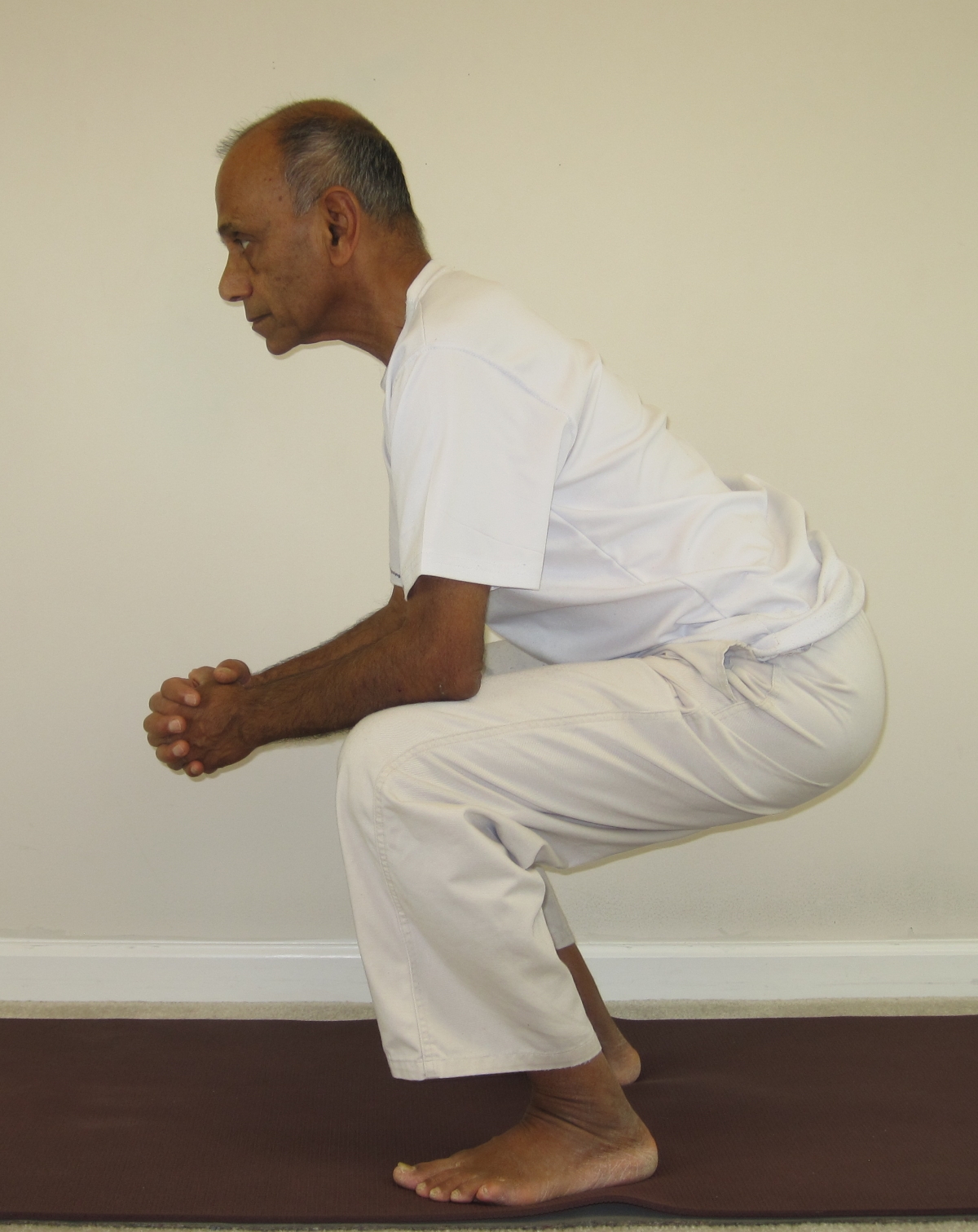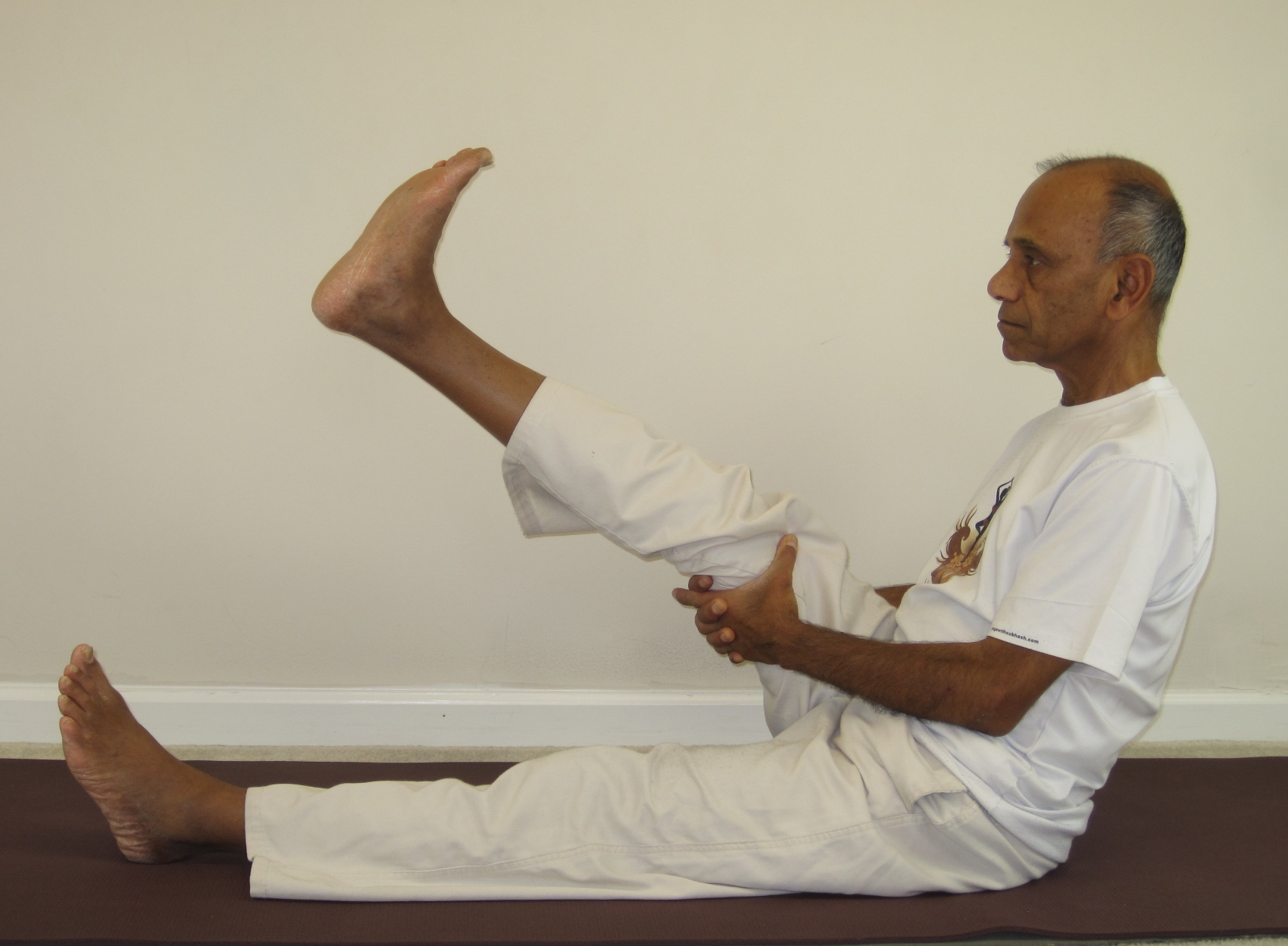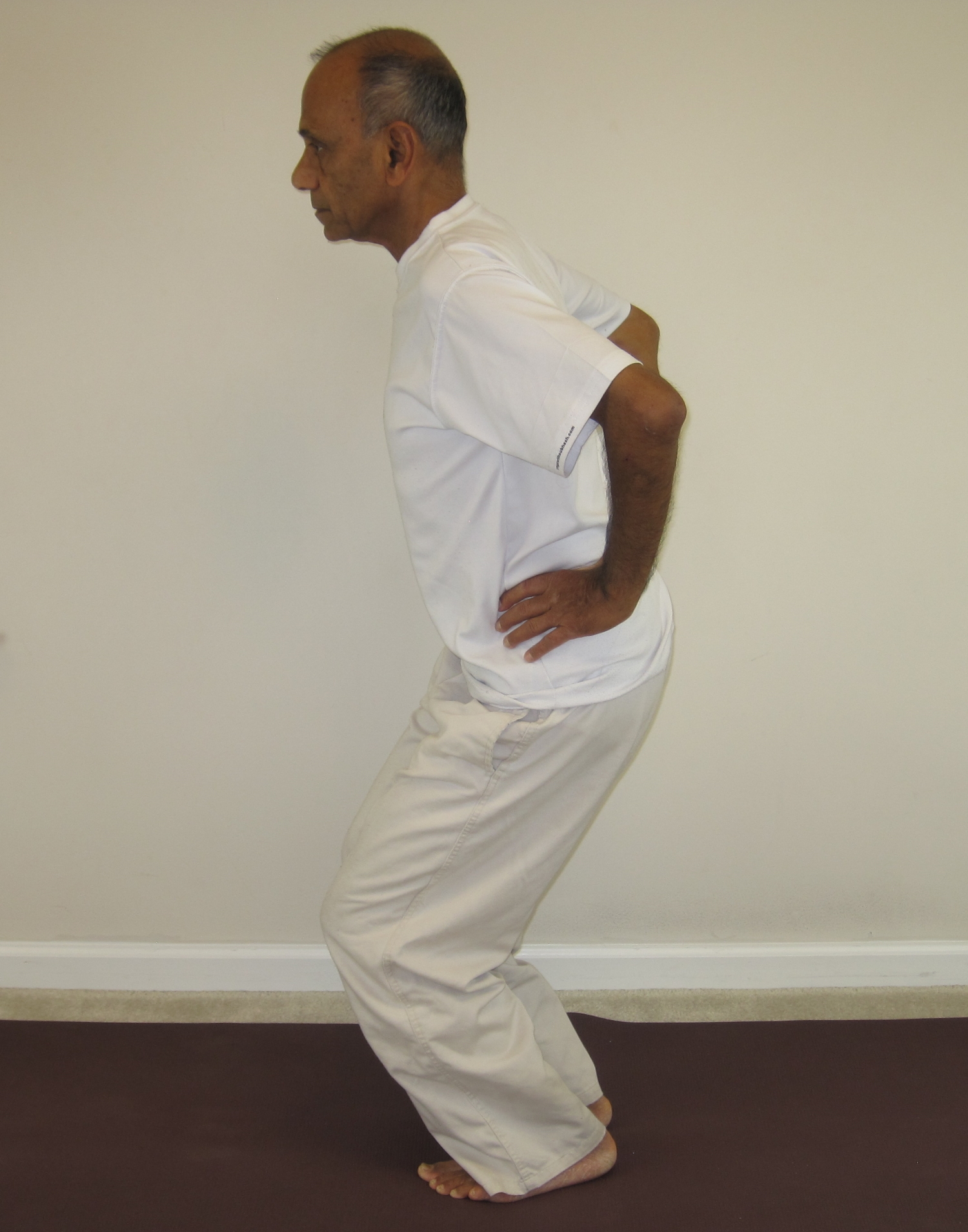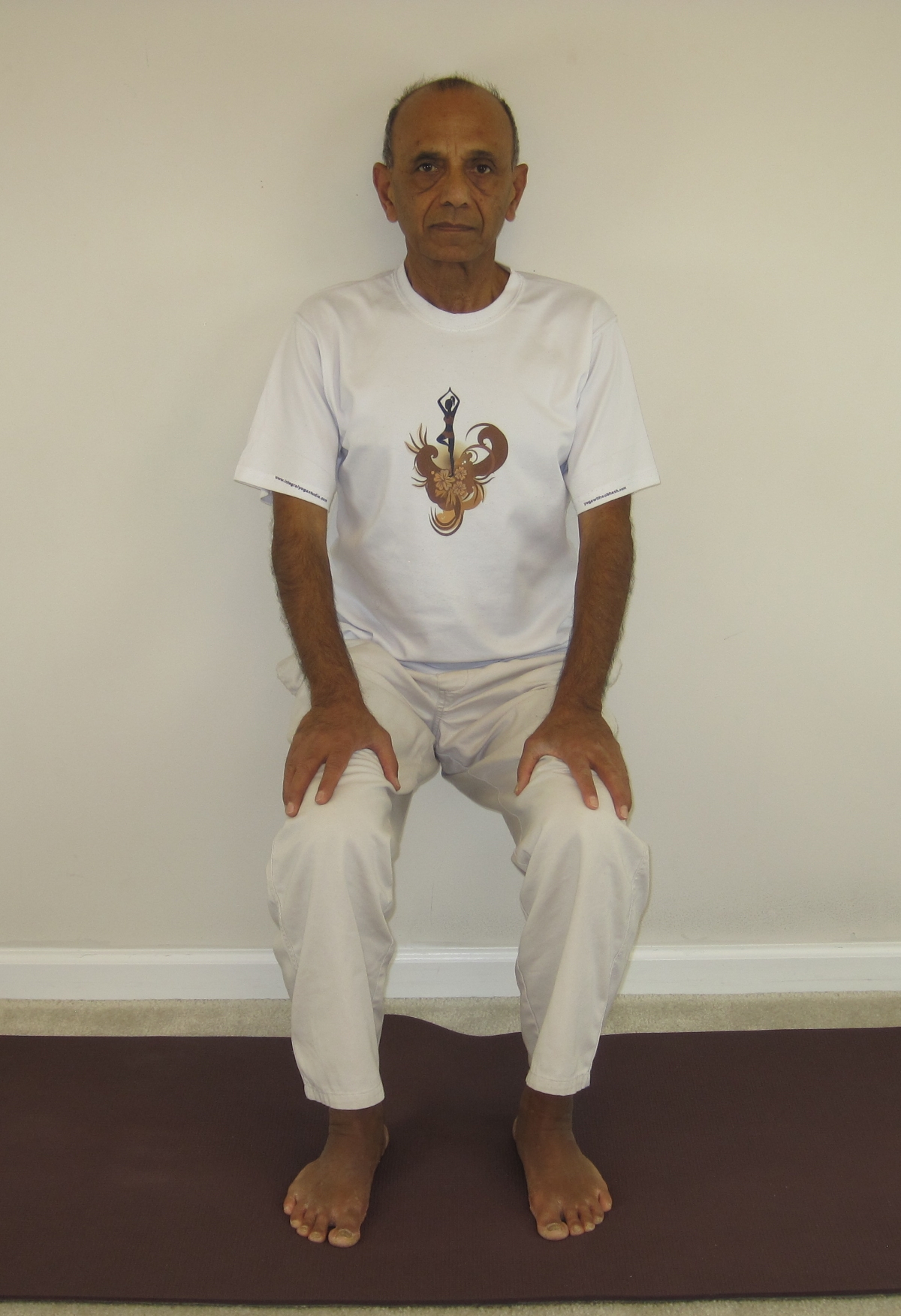
Virtual Chair
Problems with knees and low back pain are perhaps two of the most important reasons why people come to yoga for help. In this article, I would like to present a few simple poses that can help relieve knee pain and also make the knees and the surrounding muscles – hamstrings, quads, calves etc. stronger. When the muscles surrounding the knees are strong and flexible, they can support the knees much more effectively, thus preventing injury and pain in the knees.
If you already have any kind of knee pain, please try to practice under the guidance of a yoga teacher. Be careful not to engage in any movement that causes more pain or discomfort as that can further aggravate your situation.
I hope you will enjoy practicing with the video.
Seated knee rotation and hamstring stretch

Seated knee rotation
Step-by-step
- Sit with the legs stretched out in front. Lift the right leg and hold the back of the right thigh with the two hands.
- Bring the knee close to a 90 deg angle. Pick one direction and begin to make circles at the knee joint. The effort should be to make a large circular movement at the knee without engaging the hips.
- After 6-7 rounds, pause, and begin to make the circles in the other direction. Pause again after 6-7 rounds.
- Now stretch the leg straight. Still holding the back of the thigh, begin to lift the leg up higher. While lifting the leg up, try pushing the knee and the heel away and pulling the toes in toward you. This should help give a deeper stretch to the hamstring and the calf muscles.
- Hold this position for 6-7 breaths and then release the leg down and relax for a few breaths.
- Repeat the above moves with the other leg.
- Relax for a few breaths.

Seated hamstring stretch
Utkatasana (half chair pose) – knee rotation

Utkatasana (half chair)
Step-by-step
- Come to a standing position with the feet about hip distance apart. Place your hands on the waist.
- Begin to bend the knees keeping the torso vertical and tall. Pause before you begin to feel any discomfort in the knees or the hips. This is called the Utkatasana (half chair pose).
- Stay in the pose for a couple of breaths. Now pick one direction begin to rotate the knees in circles. Try to maintain a comfortable pace, not too slow or too fast. Also, make sure that you don’t strain the knees while doing these circles. Try to engage only the knees, not the hips or the waist in these movements.
- Pause briefly after 6-7 rotations; then begin the rotations in the opposite direction.
- Again, after 6-7 rotations, pause, then come to a standing position and relax for a few breaths.
Chair pose and the squat

Virtual chair
Step-by-step
- Spread the feet so that they are a little wider than shoulder width apart.
- Begin to bend the knees by lowering the buttocks slowly until the thighs are roughly parallel to the floor. Try to keep the torso straight and upright, not trying to tilt the body forward.
- Rest the elbows on the knees and interlock the fingers. Stay in this position, which looks like a virtual chair, for a duration that is comfortable for you.
- Now begin to lower the buttocks all the way down until you come into the full squat position. In this position, try to keep the feet flat on the ground. If the ankles are tight and you are unable to keep the feet flat on the ground, you may like to put a cushion under the heels.
- Please the elbows on the inside of the knees and again interlock the fingers. Try to keep the torso upright.
- Stay in the squat position for 8-10 breaths or whatever duration that is comfortable for you.
- Slowly get back up to the virtual chair position, as before. This time try to add a little rocking movement to the knees. Try to move the knees forward and backward in a gentle rhythmic manner, making sure that you don’t strain the knees. This movement will deepen the stretch on the knees. Be careful not to overdo these movements.
- Once again, slowly lower yourself down to the full squat. After the intense knee workout the squat can actually feel like a very relaxing pose. Stay in the squat for another 6-7 breaths. Finally, slowly come back up to a full standing position and rest there for a few breaths.

Squat
Wall chair
Step-by-step
- Come to a standing position with the back resting against the wall. Try to keep the feet parallel to each other, about hip width apart. Place the feet about 10-12 inches away from the wall.
- Now slowly begin to lower the buttocks down until the knees are at 90 deg and the thighs are parallel to the ground. You may need to adjust the distance between the wall and the feet so the knees are almost vertically above the ankles. Keep the buttocks, back and the head resting against the wall in this chair position. Place your palms on the knees or the thighs.
- This chair position is similar to the one we did earlier. However, with the head and the back resting against the wall, this position provides an excellent workout for the quads in addition to the knees. Since quads provide a great support for the knees as well as the spine, this pose becomes an important pose for the health of the knees and the back.
- Stay in the chair position for a duration that is comfortable for you. With practice, over a period of time, you will be able to stay in the pose for longer periods.
- When ready, come to a standing position and relax there for a few moments. At this point feel free to sit on the mat in the cross-legged position and relax.

Wall chair
I certainly hope these simple stretches will help you in maintaining strong and healthy knees. I would love to get your feedback.
We have been doing a number of workouts for knees, hips and ankles. The wall chair is new to us and works very well. Thank you very much for providing this step by step positioning for healthy knee and spine.